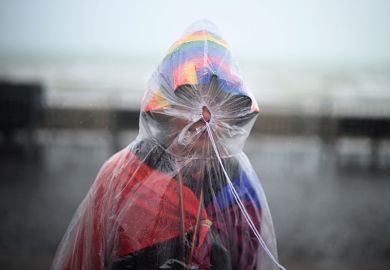The disproportionate number of journalism students in London and south-east England has implications for access in other parts of the country, and could impact local media industries, a new report warns.
As an “inextricable component of the global economy”, the provision of media, screen, journalism and communication studies at university level is vital, the British Academy study says.
The report finds that there were 58,700 undergraduate students taking media courses in the UK in 2021-22, across 134 higher education institutions. A third of them were in London and the south-east, which the report warns has “implications for access in other parts of the UK”.
Meanwhile, at postgraduate level the concentration was even higher – with 45 per cent based in the capital or its surrounding region, with the highest numbers at City, University of London, the London School of Economics and the University of the Arts London.
Because the south-east is “disproportionately attractive”, the British Academy says this will pose challenges for other UK regions in terms of attracting students, and could have a knock-on effect on department sizes and local media industries.
“A consequence of this unequal growth may be financial and recruitment challenges for HEIs outside of London and outside of the Russell Group if current trends, particularly at postgraduate levels, continue,” the report says.
The report finds that the number of first-degree students taking media, screen, journalism and communication studies rose 7 per cent between 2012-13 and 2018-19, but has since fallen by about 2 per cent. Between 2012-13 and 2021-22, the number of postgraduate students nearly doubled.
The British Academy warns that a fall in the number of academic staff working in media studies in recent years may be a concern for the field, potentially resulting in higher staff-to-student ratios.
The report, which covers degree programmes including advertising, broadcasting, cultural studies, journalism, and television and content production, also reveals that these subjects are particularly vulnerable to declining numbers of international students.
In 2021, 54 per cent of postgraduate taught students were from outside the UK.
Robin Mansell, professor emerita of new media and the internet at LSE and a member of the report’s advisory group, said the paper provides evidence against the claims that these subjects are low-value or “Mickey Mouse” degrees and play an essential role in the creative industries.
“They are crucial in addressing global issues from developing media and information literacy and combating disinformation to guiding the future adoption and use of AI tools,” she added.
“At this crucial juncture when we face challenges like course closures and shifts in international student dynamics, recognising and supporting these subjects is vital for the continued prosperity of our creativity and for the UK’s political economy.”
Register to continue
Why register?
- Registration is free and only takes a moment
- Once registered, you can read 3 articles a month
- Sign up for our newsletter
Subscribe
Or subscribe for unlimited access to:
- Unlimited access to news, views, insights & reviews
- Digital editions
- Digital access to THE’s university and college rankings analysis
Already registered or a current subscriber? Login








